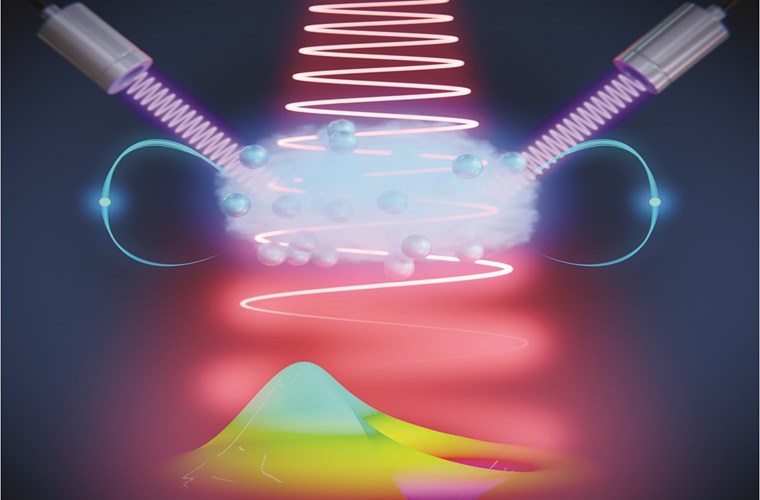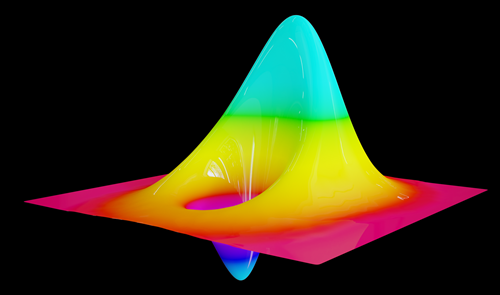Generation of optical Schrödinger cat states in intense laser–matter interactions

Over the past four decades, astounding advances have been made in the field of laser technologies and the understanding of light-matter interactions in the non-linear regime. Thanks to this, scientists have been able to carry out extremely complex experiments related to, for example, ultra-fast light-pulses in the visible and infrared range, and accomplish crucial milestones such as using a molecule’s own electrons to image its structure, to see how it rearranges and vibrates or breaks apart during a chemical reaction.
The development of high-power lasers allowed scientists to study the physics of ultra-intense laser–matter interactions. The majority of these studies are experimentally conducted using high-power femtosecond laser sources, and their interaction with matter is theoretically described by semi-classical approaches, which are incomplete because they treat the electromagnetic field is treated classically. However, the quantum nature of the entire electromagnetic fields is always present in these processes, so a natural question arises: does this quantum nature exhibit itself? In which situations does it appear?
"NFFA Europe has provided priceless support for conducting the experiments of this research," says P. Tzallas.
In a theoretical and experimental study published in Nature Physics, an international team of researchers (from ICFO/ICREA-Spain, Technion-China, MBI-Germany, ELI-ALPS-Hungary, and FORTH-Greece) led by Maciej Lewenstein (ICFO -Spain) and Paraskevas Tzallas (FORTH-Greece), demonstrates the generation of optical Schrödinger cat states using intense laser–matter interactions.This has been achieved by using the process of HHG in atoms, in which large numbers of photons from a driving laser pulse of infrared frequency are up-converted into photons of higher frequencies in the extreme ultraviolet spectral range. It is found that the quantum state of the fundamental mode after the interaction, when conditioned on the high-harmonic generation, leads to the generation of a so-called Schrödinger cat state, which corresponds to a superposition of two distinct coherent states: the initial state of the laser and the coherent state reduced in amplitude that results from the interaction with atoms.

Wigner function of an optical Schrödinger cat state generated using intense laser-atom interactions.
In a theoretical and experimental study published in Nature Physics, an international team of researchers (from ICFO/ICREA-Spain, Technion-China, MBI-Germany, ELI-ALPS-Hungary, and FORTH-Greece) led by Maciej Lewenstein (ICFO -Spain) and Paraskevas Tzallas (FORTH-Greece), demonstrates the generation of optical Schrödinger cat states using intense laser–matter interactions.This has been achieved by using the process of HHG in atoms, in which large numbers of photons from a driving laser pulse of infrared frequency are up-converted into photons of higher frequencies in the extreme ultraviolet spectral range. It is found that the quantum state of the fundamental mode after the interaction, when conditioned on the high-harmonic generation, leads to the generation of a so-called Schrödinger cat state, which corresponds to a superposition of two distinct coherent states: the initial state of the laser and the coherent state reduced in amplitude that results from the interaction with atoms.
The results of this study open the path for investigations towards the control of the non-classical states of ultra-intense light, and exploiting conditioning approaches on physical processes relevant to high-harmonic generation. This hopefully will link ultra-intense laser-matter physics and atto-science to quantum information science and quantum technologies in a novel, and completely unexpected manner.
M. Lewenstein, M. F. Ciappina, E. Pisanty, J. Rivera-Dean, P. Stammer, Th. Lamprou and P. Tzallas, "Generation of optical Schrödinger cat states in intense laser–matter interactions.", Nat. Phys. 17, 1104–1108 (2021).
Attosecond Science and Technology laboratory at FORTH, Heraklion (Crete), Greece

